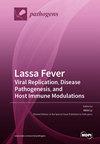The Negative Impact of Maternal HIV Infection on Birth Outcomes—Myth or Reality?
IF 3.3
3区 医学
Q2 MICROBIOLOGY
引用次数: 0
Abstract
Human Immunodeficiency Virus (HIV) infection during pregnancy poses significant risks to both maternal and child health, with potential adverse effects on perinatal outcomes. This study aimed to compare perinatal outcomes, including birth weight, length, Apgar scores, and prematurity rates, between HIV-exposed, uninfected (HEU) children and HIV-unexposed, uninfected (HUU) children. A total of 204 neonates were included in the study, comprising 102 born to HIV-positive mothers and 102 born to uninfected mothers. Our findings revealed significant differences in birth weight (p < 0.001), length (p < 0.001), and Apgar scores at both 1 min (p = 0.003) and 5 min (p < 0.001) between HIV-exposed and -unexposed children. The HIV-exposed group exhibited lower birth weights and lengths, along with lower Apgar scores, indicating potential neonatal health challenges. No significant disparities were observed in the prematurity risk between the two groups (OR = 2.58, p = 0.126), but the risk of being born small for gestational age (SGA) in the case of HEU newborns was significantly high (OR = 17.41, p < 0.001). The significant differences in birth weight, length, and Apgar scores underscore the need for tailored healthcare interventions and support for neonates born to HIV-positive mothers. These findings contribute to our understanding of the complex interplay between maternal HIV infection and perinatal outcomes, guiding healthcare professionals in delivering targeted care for this vulnerable population.产妇感染艾滋病毒对分娩结果的负面影响--神话还是现实?
孕期感染人类免疫缺陷病毒(HIV)会对母婴健康造成重大风险,并对围产期结局产生潜在的不利影响。本研究旨在比较感染艾滋病毒的未感染(HEU)儿童与未感染艾滋病毒的未感染(HUU)儿童的围产期结局,包括出生体重、身长、Apgar 评分和早产率。这项研究共纳入了 204 名新生儿,其中 102 名新生儿的母亲为 HIV 阳性,102 名新生儿的母亲未感染 HIV。我们的研究结果表明,在出生体重(p < 0.001)、身长(p < 0.001)和 1 分钟(p = 0.003)和 5 分钟(p < 0.001)Apgar 评分方面,感染 HIV 和未感染 HIV 的新生儿存在明显差异。暴露于艾滋病毒组的婴儿出生体重和身长较低,Apgar 评分也较低,这表明新生儿健康可能面临挑战。两组新生儿的早产风险无明显差异(OR = 2.58,p = 0.126),但 HEU 新生儿的胎龄小风险(SGA)明显较高(OR = 17.41,p < 0.001)。新生儿出生体重、身长和阿普加(Apgar)评分的明显差异突出表明,有必要为艾滋病毒阳性母亲所生的新生儿提供量身定制的医疗保健干预和支持。这些研究结果有助于我们了解母体艾滋病病毒感染与围产期结果之间复杂的相互作用,指导医护人员为这一弱势群体提供有针对性的护理。
本文章由计算机程序翻译,如有差异,请以英文原文为准。
求助全文
约1分钟内获得全文
求助全文
来源期刊

Pathogens
Medicine-Immunology and Allergy
CiteScore
6.40
自引率
8.10%
发文量
1285
审稿时长
17.75 days
期刊介绍:
Pathogens (ISSN 2076-0817) publishes reviews, regular research papers and short notes on all aspects of pathogens and pathogen-host interactions. There is no restriction on the length of the papers. Our aim is to encourage scientists to publish their experimental and theoretical research in as much detail as possible. Full experimental and/or methodical details must be provided for research articles.
文献相关原料
| 公司名称 | 产品信息 | 采购帮参考价格 |
|---|
 求助内容:
求助内容: 应助结果提醒方式:
应助结果提醒方式:


